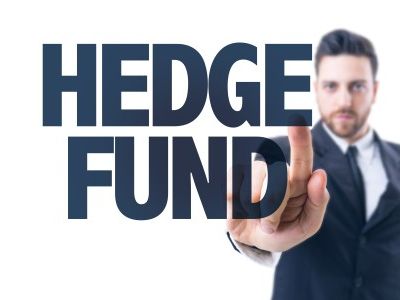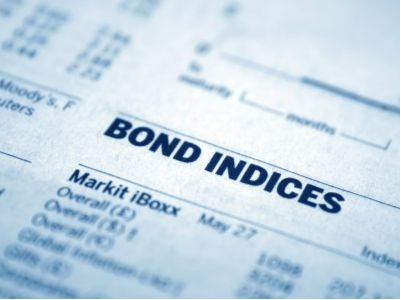Allianz Investment: Predicts that the Federal Reserve will cut interest rates by 125 basis points from December to next year.
2024-11-29 14:20
Chen Jiaying believes that the Federal Reserve has started a rate-cutting cycle in September this year, and short-term interest rates will gradually decrease. The Federal Reserve cut interest rates by another 25 basis points in November, and is forecasted to cut rates by a total of 125 basis points from December to next year.
The results of the US presidential election in November have been released, with the Republican candidate Trump winning 312 votes and being re-elected as the President of the United States. This result has caused fluctuations in the bond market. An investment senior product specialist at Allianz, Chen Jiaying, believes that the Federal Reserve began a cycle of interest rate cuts in September of this year, and short-term interest rates will gradually decrease. Federal Reserve Chairman Powell also mentioned that inflation data is gradually easing, and with the slowing growth in employment positions, whoever is in the White House will not have a significant impact on short-term interest rates. The Federal Reserve will cut interest rates by another 25 basis points in November, with a forecast of a total cut of 125 basis points from December to next year.
Although the decline in US interest rates may drag down overall bond yields, short-term high-yield bond yields are still as high as 7% currently. The basic forecast is for a soft landing of the US economy, making the performance of high-yield bonds relatively stable, with short-term high-yield bond yields expected to be between 6% and 7% next year. Even if the US enters an economic recession, Chen Jiaying believes that the default rate of short-term high-yield bonds will not increase significantly, as the yield curve has inverted for over two years, but the US economy remains resilient. Additionally, small and medium-sized companies have already prepared themselves for an economic recession in the US, with conservative debt issuance amounts, a focus on cash flow, and not excessively high leverage ratios.
Chen Jiaying stated that with the US entering an interest rate cut cycle, short-term high-yield bonds in the US will provide investors with attractive yields, along with low interest rate sensitivity. As of October 31, 2024, the yield rates for US 10-year treasury bonds and investment grade corporate bonds were 4.28% and 5.22% respectively, while the dividend yield of the S&P 500 index was only 1.32%, much lower than the average yield of 7.5% for US high-yield bonds, making them an attractive investment opportunity for international and domestic investors.
Chen Jiaying mentioned that as of October 2024, the default rate for short-term high-yield bonds was only 0.55%, much lower than the historical long-term default rate of 3.5%. Compared to long-term interest rates, which have greater uncertainty and volatility due to various factors influencing them such as market expectations for economic growth and inflation, supply and demand of US Treasury bonds, and fiscal policy, short-term bonds offer higher stability.
High-yield bonds: High returns and diversified investment tools
The overall size of high-yield bonds in the US has increased from $338 billion in 2000 to $1.38 trillion in December 2023, making it a popular asset class among investors. According to the Bank of America Merrill Lynch US High Yield Index by the Intercontinental Exchange, US high-yield bonds account for about 62% of the global high-yield bond market and cover multiple industries. The high-yield bonds held by Allianz's US short-term high-yield bond fund have a maturity of less than 5 years, and as of September 30, 2024, the fund's Class AM (USD) dividend share achieved a return rate of 7.8% this year.
Overall, short-term high-yield bonds may provide an attractive option for investors seeking high returns. However, investors must carefully assess their default risk and market volatility when considering them for their portfolios. Through in-depth analysis of market conditions and the fundamentals of issuing companies, investors can better grasp the opportunities and challenges presented by high-yield bonds and formulate more reasonable and effective investment strategies. In this rapidly changing financial market, investors who can seize opportunities and manage risks effectively can establish a strong position in the world of high-yield bonds.
Convertible bonds: Both offensive and defensive strategies
In addition to short-term bonds, investors can also consider another diversified asset - income and growth strategies. While the three major US stock indexes continue to reach new highs, financial markets are constantly changing. In addition to holding high-yield bonds during a rate-cutting cycle to earn stable interest income, stock investors can also deploy convertible bonds to hedge against the risk of a stock market downturn. When the stock market declines, investors can continue to hold convertible bonds to earn potential returns; when the stock market rises, investors can convert the convertible bonds into stocks to capture the potential for stock market growth, making convertible bonds a versatile investment tool.
Since convertible bonds involve risks from both bonds and stocks, their value may decrease if interest rates rise, and some convertible bonds may have lower credit ratings than investment-grade bonds, increasing their risk. Additionally, investors can also use covered call options - holding long positions in individual stocks while selling related call options to earn option premiums. In a stable market, earning option premiums may outperform the broader market, and in a bear market, it can help offset some of the declines in the stocks, potentially allowing the portfolio to outperform the broader market as well.
RECOMMEND

AMAC: In January, 137 new asset-backed special plans were filed, with a total scale of 1122.64 billion yuan.
26/02/2025

Schroder Investment: Investors should consider allocating funds to securitized credit and insurance-linked securities.
26/02/2025

Reuss County Asset Annual Reflection: Policy Tipping Point is very clear. The semiconductor industry in 2025 is a game for the brave.
26/02/2025


